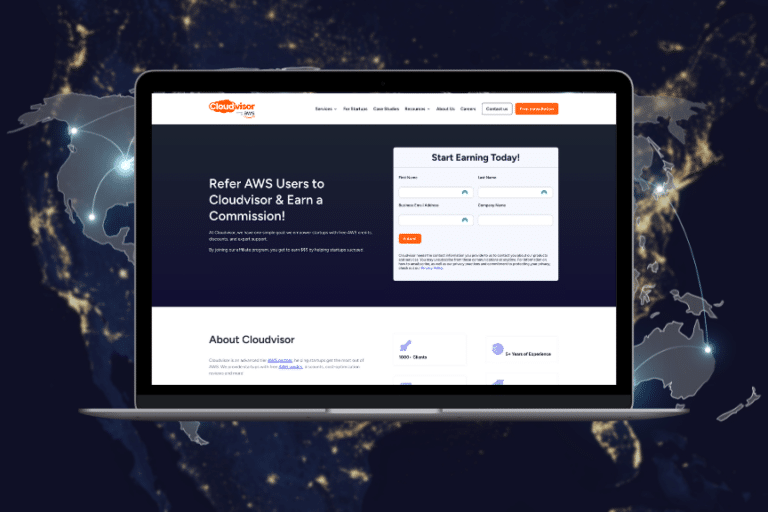As we delve deeper into the digital age, the rapid expansion of online services has significantly increased the demand for data centers globally. With this surge comes a heightened responsibility to address the environmental impacts of such vast digital infrastructures. Modern data centers, pivotal to cloud computing, are increasingly seen as crucial areas where sustainability practices can and should be enforced to mitigate their substantial energy and water usage. This article explores the importance of transitioning to sustainable data centers, focusing on innovative approaches and highlighting Amazon Web Services (AWS) as a leader in this transformative journey.
Table of Contents
The Rising Demand and Environmental Impact of Data Centers
Data centers are the backbone of the digital economy, hosting the servers and storage systems that enable everything from corporate data processing and e-commerce to streaming services. However, their operational necessities—particularly around-the-clock power and cooling—make them significant consumers of electrical power. It’s estimated that data centers consume up to 2% of global electricity, a figure that only looks set to grow with the increasing deployment of AI technologies, which are expected to outpace the power consumption of other digital activities like Bitcoin mining.
The environmental footprint of data centers is not just a matter of energy consumption but also extends to water use and electronic waste. As data centers strive to maintain optimal operational temperatures, water-cooled systems are frequently used, which can exacerbate local water scarcity issues. Furthermore, the rapid pace of technological upgrades contributes to a continuous cycle of hardware replacement, leading to significant amounts of e-waste.
The Shift Towards Sustainable Data Centers
Recognizing these challenges, the industry is moving towards more sustainable solutions. The goal is to transform data centers into facilities that are not only energy-efficient but also environmentally integrated, using green power sources and minimizing waste.
Renewable Energy Integration
A pivotal aspect of sustainable data centers is the transition to renewable energy. Companies like Google have committed to powering their operations with 100% renewable energy by 2030. Similarly, AWS is advancing towards powering its operations with 100% renewable energy by 2025. These commitments not only help reduce the carbon footprint of digital operations but also align corporate practices with global sustainability goals. If you want to make your cloud infrastructure greener, book your free consultation today and start your journey towards a sustainable cloud with Cloudvisor.
Enhancing Energy Efficiency in Data Centers
Data centers around the world are taking significant steps to enhance their energy efficiency through both innovative design and operational improvements. Advanced modeling methods, such as computational fluid dynamics, are now commonly used during the planning stages to predict and optimize the energy efficiency of facilities. This proactive approach allows for the design of systems that minimize energy waste from the outset. Additionally, once data centers are operational, the adoption of real-time, physics-based models supports continuous performance optimization, ensuring that energy usage is constantly refined to meet the dynamic demands of modern computing.
Innovations in Cooling Technologies
Cooling is a critical and energy-intensive component of data center operations. To address this, the industry is shifting towards more innovative and sustainable cooling methods. Techniques such as direct evaporative cooling, which adapts to real-time sensor data and environmental conditions, are becoming more prevalent. These systems enhance cooling efficiency and reduce reliance on traditional water cooling solutions, thus supporting better management of water resources and contributing to overall environmental sustainability. Furthermore, the use of advanced heat exchangers and phase-change materials also shows promise in reducing the energy footprint associated with maintaining optimal operating temperatures.
Sustainable Building Practices for Data Centers
The design and construction of data centers are increasingly influenced by sustainable building practices. Choosing strategic locations that naturally minimize energy consumption for cooling and ensuring that facilities are designed with scalability in mind are key considerations. Modular designs are particularly advantageous as they allow for rapid expansion or reconfiguration without significant disruptions or resource-intensive construction projects. Employing green building materials and techniques not only reduces the environmental impact during the construction phase but also enhances the overall sustainability of the facility throughout its operational life.
Waste Reduction and E-Waste Management Strategies
As technology advances, the lifecycle of hardware components becomes a critical consideration for data centers. Robust recycling and refurbishment programs are essential for managing e-waste effectively. By extending the lifespan of servers and other hardware through regular maintenance and upgrades, data centers can significantly reduce waste and decrease the demand for new materials. This approach not only supports the principles of a circular economy but also aligns with broader sustainability goals by minimizing the environmental footprint associated with electronic waste.
By focusing on these areas, data centers can drive significant improvements in sustainability, reducing both their environmental impact and operational costs. These practices are essential for aligning with global efforts to mitigate climate change and promote environmental stewardship in the technology sector.
Enhancing Energy Efficiency
AWS has demonstrated significant strides in enhancing the efficiency of its data centers through both design and operational innovations. For instance, the use of advanced modeling methods and computational fluid dynamics tools allows AWS to predict and optimize the energy efficiency of its data centers before they are even built. Once operational, real-time, physics-based models enable continuous performance optimization.
Cooling Innovations
Cooling remains one of the most energy-intensive aspects of data center operations. AWS is at the forefront of cooling innovation, using techniques like direct evaporative cooling systems that adapt to real-time sensor data and environmental conditions. This not only reduces energy use but also decreases the dependency on water cooling, contributing to better water resource management.
Sustainable Building Practices
From the location and design of the facility to the materials used in construction, sustainable building practices are integral to reducing the environmental impact of data centers. AWS employs modular designs that allow for efficient space utilization and scalability, reducing the need for frequent physical expansions and thus minimizing the associated environmental disruption.
Waste Reduction and E-Waste Management
To tackle the issue of e-waste, AWS has instituted robust recycling and refurbishment programs. By extending the life of servers and other hardware, AWS not only cuts down on waste but also reduces the demand for new materials, exemplifying a commitment to the principles of a circular economy.
AWS: Sustainable Cloud Computing
Amazon Web Services (AWS) is actively advancing sustainability within its data centers through a comprehensive approach that encompasses design innovations, cooling technologies, building practices, and waste management. AWS utilizes advanced modeling methods, such as computational fluid dynamics, to design and optimize energy efficiency from the ground up. This foresight continues into operations with the deployment of real-time, physics-based models for ongoing performance optimization. AWS’s broad sustainability strategy also includes efforts to reduce embodied carbon and optimize water utilization, supported by tools like the AWS Customer Carbon Footprint Tool, which enables customers to measure and manage the carbon emissions of their AWS workloads.
Looking Forward: The Future of Sustainable Data Centers
The transformation toward sustainable data centers is an essential, ongoing journey. As industry leaders like AWS set benchmarks and pioneer innovations in renewable energy, cooling efficiency, and sustainable building and waste management practices, the entire data center industry is propelled toward a future where digital infrastructure is both powerful and environmentally sustainable. This shift is crucial not only for reducing the environmental impact of our digital world but also for supporting global efforts to combat climate change and ensuring that the backbone of the digital economy aligns with broader sustainability goals. By leading by example, the data center industry can play a pivotal role in transitioning to a greener future.






